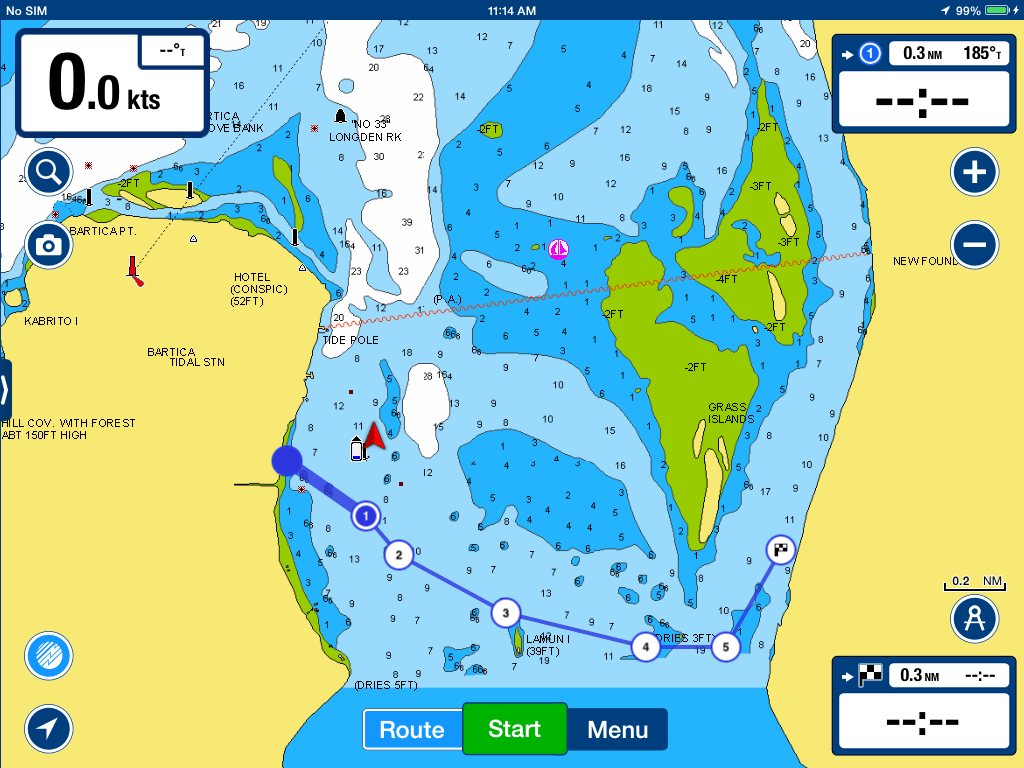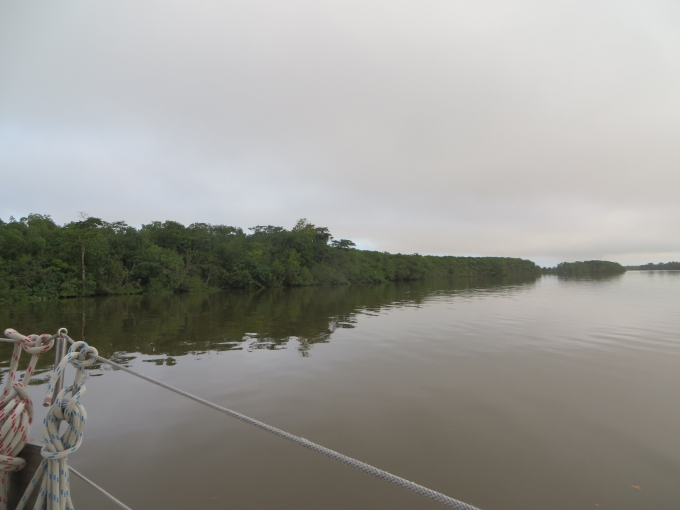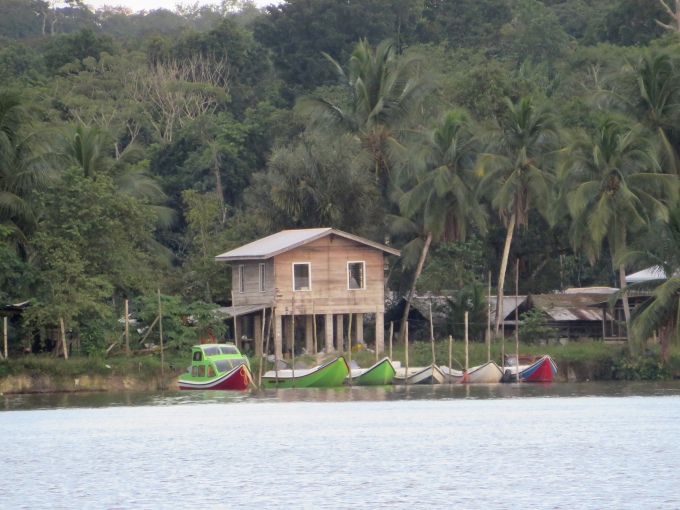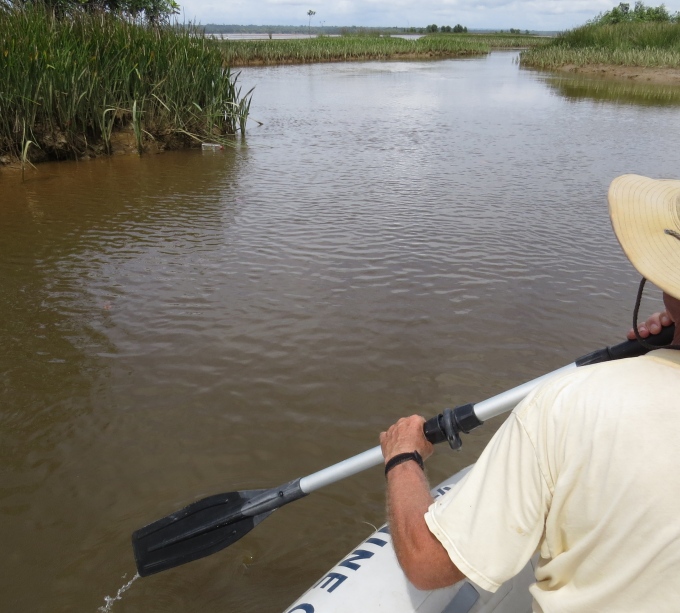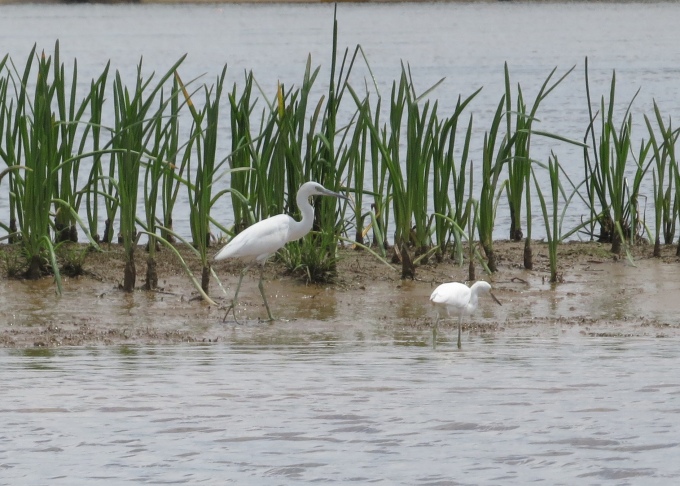Grass Islands and Roosting Parrots
/ While reading Doyle's Cruising Guide to Guyana, I noted a Noonsite comment about things to do near Bartica … “Some nights must also be spent at Grass Islands, where hundreds of parrots go every night to roost, a sight you will be unlikely to see anywhere else in the world, not to mention the sounds.” We decided to get away from the big city for a night or two and check out the Grass Islands, just a mile or two on the other side of the Essequibo.
While reading Doyle's Cruising Guide to Guyana, I noted a Noonsite comment about things to do near Bartica … “Some nights must also be spent at Grass Islands, where hundreds of parrots go every night to roost, a sight you will be unlikely to see anywhere else in the world, not to mention the sounds.” We decided to get away from the big city for a night or two and check out the Grass Islands, just a mile or two on the other side of the Essequibo.
We had more than one motive for moving the boat. It gets pretty loud near the Bartica shore at night with music, traffic noise and the comings and goings of small riverboats, fast ferries, and ships on the wharf. We were hoping for a more tranquil setting. We left Bartica in late afternoon and picked our way carefully across the river. The distance isn't far, but with uncharted shoals and rocks, we played it safe and headed there slowly on a rising tide. We saw a least depth of 9.8' (2.8m) during the transit and anchored in the lee of the largest island in about 20' (6m). The setting was quiet and calm, out of the ship channel between the Grass Islands to the west and a few houses and a little river ferry stop on the mainland shore to the east.
As we waited for dusk and the parrot migration, we busied ourselves with little chores … polishing stainless, wiping down the cockpit, general tidying up. As a side note, we've been quite disappointed in the new stainless rigging which seems to show rust much more than any previous rigging we've had. This, in spite of the fact that the highly recommended South African rigger made a point of telling us and emphasizing that he only used top quality European wire and nothing imported from China. I gave David a much needed haircut on the aft deck. At slack tide, we took a refreshing dip in the river.
It was dusky by 5:15 and still no parrots. We thought we'd been misled when we suddenly heard a faraway squawk, then another, then another. Flapping their wings in the awkward, comical way that parrots do, and squawking loudly all the while, they came in pairs, then five pairs, then flocks of 20 and 30 pairs. They came from the south mostly, from upriver where it's less inhabited and more densely forested. The sound volume was incredible … chaotic, frenzied “Honey, I'm home” squawks … a 45 minute concert of disharmony.
They landed in the treetops, then seemed to delve deep into the foliage. They must have occupied every tree and branch on the island. We wondered if they return to the same reserved roosting branch every night or if it's first come-first served. The sound had intensified and then at 6pm, when the last vestiges of day had disappeared, it was as if the 'lights out' signal was given. We heard a couple of “Good night, John Boys”, and then all went silent. Unfortunately, the light was so dim and we were so far away, the photos taken from Nine of Cups' deck were pretty poor quality. Despite that, can you pick out all four parrots in this picture?
We had our dinner, enjoyed the evening calm and resolved to be up at dawn to see the parrots return to their day jobs. At first light, just about 12 hours after their previous night's return, we heard the first squawks of the early birds heading out. Then the sky was full of squawking parrots and by 5:45am, all was quiet again. Again, too dim for photos, but we certainly enjoyed the entertainment. It was reminiscent of the corellas on Bribie Island on Australia's east coast. The squawking was so loud there that a fellow finally stomped out of his house and began thwacking the trees with his cricket bat in a maniacal way, yelling “Shut up … shut up!”. It worked ...kind of. The corellas, startled by the thwacks, flew off to other trees just down the road.
We stayed another night, snuggling in closer to the nesting island, in hopes of getting better photos, but overcast skies dampened our chances. In the morning, it was pouring which didn't deter our parrot friends in the least. They headed off to work just like mailmen. The rain cleared and we ventured in the dinghy to the far side of the roosting island to see what we could see. Spider lilies bloomed profusely and trees boasted large orange blossoms.
During low water, we could see why these were called the grass islands. We drifted in the dinghy with the tide for awhile, then David paddled through shallow channels lined with tall grass.
The parrots were gone, but a pair of egrets surveyed the muddy low-tide shore for snacks.
At dusk, it was raining again, so no chance of a closer encounter or photos. We did, however, enjoy a repeat of the parrots' discordant sonata.
We have marginal internet capabilities here and haven't purchased a bird book for the Caribbean. Any chance someone can help us to identify this medium-sized, lime green parrot with yellow cheeks and a blue head?


